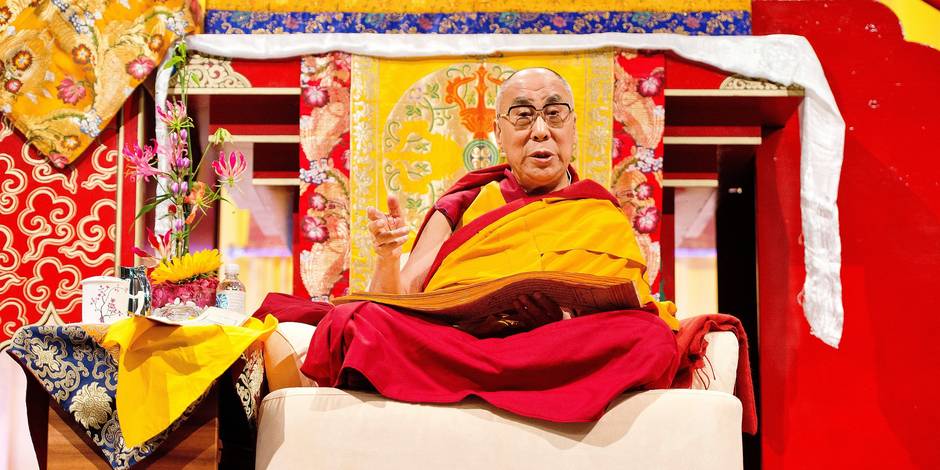
In a further test, when the Dalai Lama's rosary, small drum and walking stick were offered him, he chose those which had been his own in his previous incarnation in preference to the replicas presented to him at the same time-a test in which another aspirant to the office failed. Following the Tibetan Buddhism belief in the principle of rebirth, the Dalai Lama is believed by adherents to be able to choose the body into which he is.

He took hold of the rosary which had belonged to the late Dalai Lama, telling the beads and repeating the Buddhist formula “Om Mane Padme Hum”. Not only had the existence of the reincarnated Dalai Lama and his whereabouts been indicated in a vision, according to precedent, but also when visited by the search party, disguised as traders, he recognized their holy calling and distinguished between the status of the individuals who composed the party. Some particulars of the signs by which the authenticity of the reincarnation was attested, as reported from Tibet, are transmitted by the Delhi correspondent of The Times in the issue of October 29. Lhamo Dhondhup, the new Dalai Lama, now some five years of ago, was born in Amdo Ari, near Kumbum, in Silling and at his birth there was a rainbow’ over the house. The records of early travellers in Tibet bear witness to the elaborate precautions taken to ensure the true succession to the holy office, and the careful, if reverent, regimen to which its youthful occupant is subjected. According to Lamaistic belief, when a Dalai Lama dies, his spirit is reincarnated in the body of his successor, born at the moment of his death.

DURING the five years which have elapsed since the death of the Dalai Lama of Tibet, reports have appeared of the progress made in the search for his successor.


 0 kommentar(er)
0 kommentar(er)
